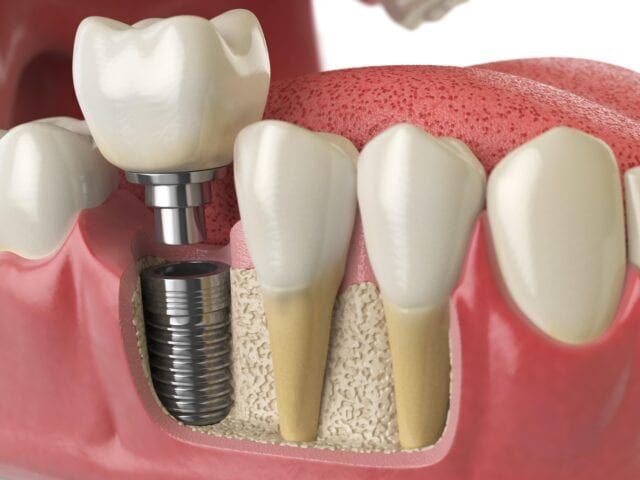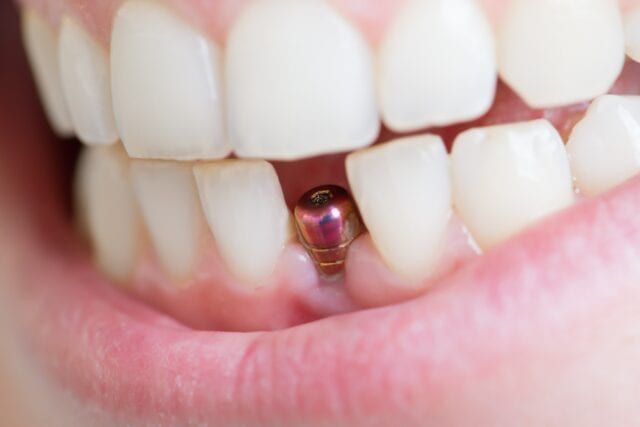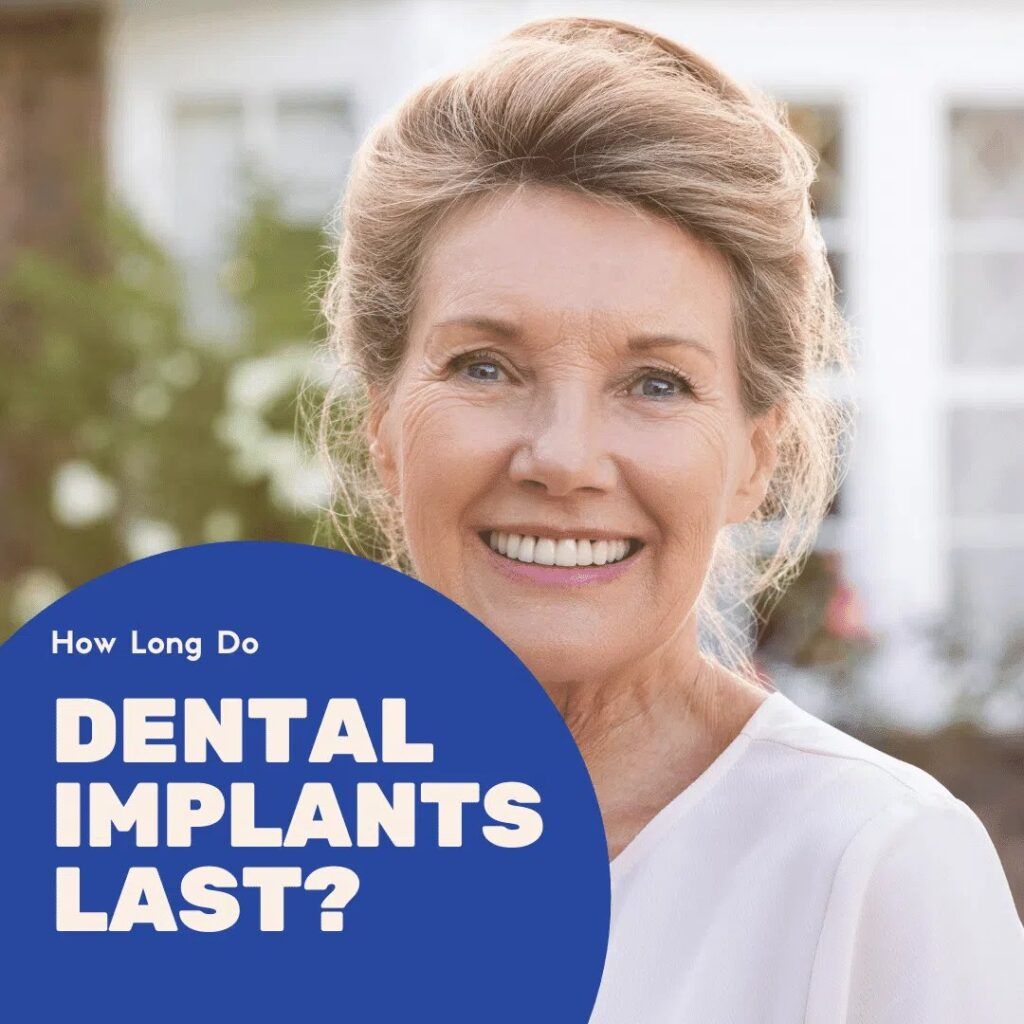More and more people are choosing dental implants over other tooth replacement options such as bridges or dentures. When it comes to making the decision of whether or not to get dental implants, however, one common concern many people have is the longevity of dental implants as compared to other tooth restorations. After all, getting dental implants is slightly more involved than getting a bridge or denture placed, so most people want to make sure it’s going to be worth it in the long run. In order to answer the question of how long dental implants last, we must look at a few different factors such as: the structure of dental implants, the type of prosthesis used, and when replacements are necessary.
The Structure of Dental Implants

First and foremost, we must understand the basic anatomy of an implant-supported restoration. Regardless of the type of prosthesis, implant-supported restorations are composed of three main components. The implant post is made from surgical-grade titanium and is the piece that is implanted into the jawbone. Since it needs to create a strong bond with the surrounding bone, the implant post is threaded to encourage osseointegration, or the fusing of implant to the bone.
On the inside of the implant post is a hollow area designed for an abutment piece. The abutment is a metal post that screws into the implant post and extends above the gum line. The final component of a dental implant is the prosthesis that attaches to the abutment using dental adhesives or a small screw covered by composite resin. There are three different types of prosthesis that can be used in coordination with the implant post, including a crown, bridge, or denture. Crowns are used to replace a single missing tooth, while bridges and dentures are used to replace multiple missing teeth and/or an entire mouthful of teeth.
The Average Lifespan of Dental Implants
Since there are three components that technically make up a single dental implant, these different components must all be considered when determining how long an implant-supported restoration will last. In most cases, the implant post lasts the longest because it is fused with the surrounding bone and is not directly exposed to things that can cause damage. Most sources put the average lifespan of a dental implant post at around 25 years or more, however there are also some sources that say implant posts can be permanent.
The other two components, the abutment and prosthesis, are more likely to become damaged, however, and may eventually require replacement. Generally speaking, the implant-supported restoration may need to be replaced approximately every 10-15 years since the constant forces of chewing and biting will eventually wear down the exterior surface. However, the exact lifespan of implant-supported restorations will depend on a number of factors including the materials it is made of, the location it is placed in, and your oral habits.
The type of prosthesis can also determine how long they last. For example, a single dental crown located in the front of the mouth is more likely to last longer than an implant-supported denture. This is because the majority of chewing force affects the back teeth, which could cause a denture to wear down faster since it replaces an entire arch of teeth. Still, it is important to note that implant-supported bridges or dentures last longer than traditional bridges or dentures.
When Implant-Supported Restorations Need to be Replaced
Generally speaking, you will only need to replace your implant-supported restoration when it has worn down and/or if it has been damaged. Although implant-supported restorations are made to be exceptionally strong, they can still become worn or damaged just like natural teeth. While they normally last about 10-15 years before needing replacement, there are cases where implant-supported restorations may need to be replaced sooner. For example, a person who frequently grinds or clenches their teeth is more likely to wear down or possibly damage their restoration sooner than someone who does not grind their teeth.
Other factors, such as oral hygiene, can also affect the lifespan of an implant-supported restoration. Although implant-supported crowns, bridges, and dentures are made from quality dental materials that are not affected by tooth decay, the gums surrounding these prostheses can still be affected by gum disease. Gum disease causes the gums to become inflamed and can even cause them to pull away from the restoration. Not only does this ruin the appearance of your implant, but it allows more bacteria to enter the gums and advance the infection. In severe cases of gum disease, the bacteria can cause jawbone deterioration and increase the risk of implant failure.
How Your Dentist Replaces Implant-Supported Restorations

As long as your implant post is still fused to the bone and the bone has sustained no damage from severe gum disease, your dentist will likely only need to replace your restoration. This can easily be done by removing the prosthesis from the abutment piece. In some cases, the abutment may also be replaced at the same time as the prosthesis. However, the implant post itself will remain in place. In most cases, replacing your restoration is quick, easy, and painless.
When Dental Implants Need to be Replaced
The overall success rate of dental implants is around 95%, nevertheless there are still rare cases where an implant can fail. An implant is said to fail when they have become loose or shifted in position. When this happens, the implant will need to be removed and replaced. Here are some instances where a dental implant may fail and require replacement:
- Infection around the implant
- Nerve damage
- Loose implant or implant falls out
- Sudden sinus problems
- Implant breaks
Overall, dental implants are extremely long-lasting compared to other tooth replacement options. When taken care of, dental implants can last around 25 years and possibly even longer. However, the implant-supported prostheses usually only last around 10-15 years and will require replacement when they wear down or become damaged. When this happens, your dentist can generally replace the prosthesis only without needing to remove the implant. The implant post itself will only need to be removed if it fails to fuse with the surrounding bone or becomes broken.

